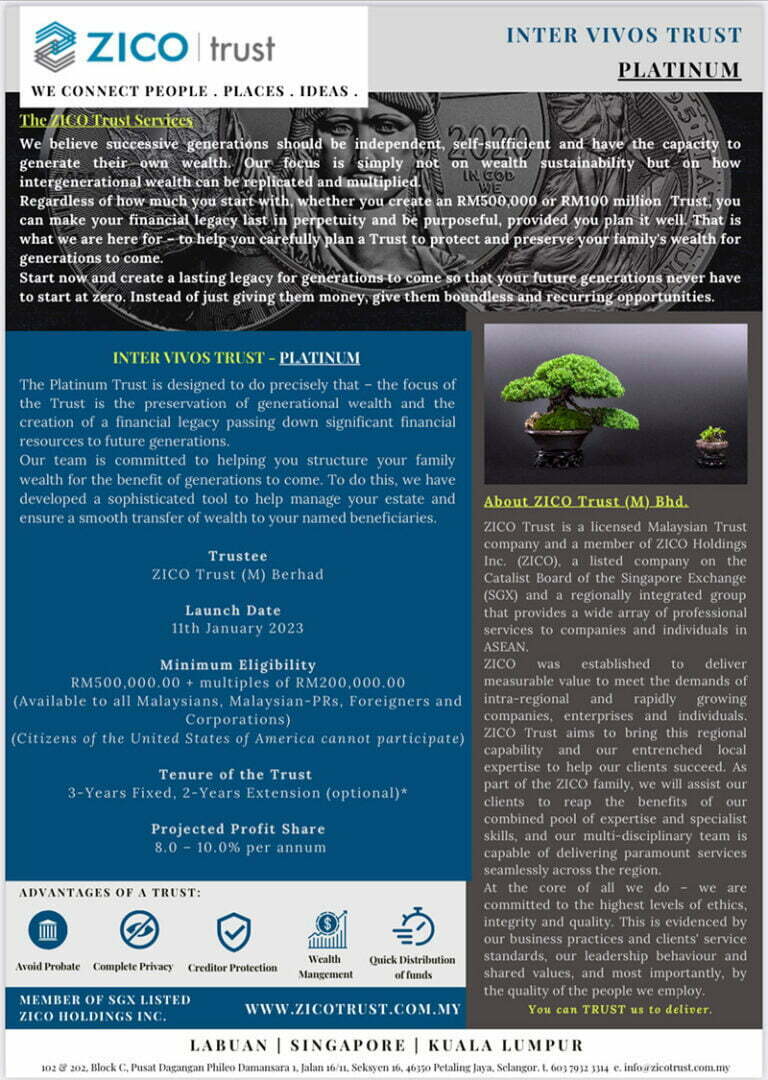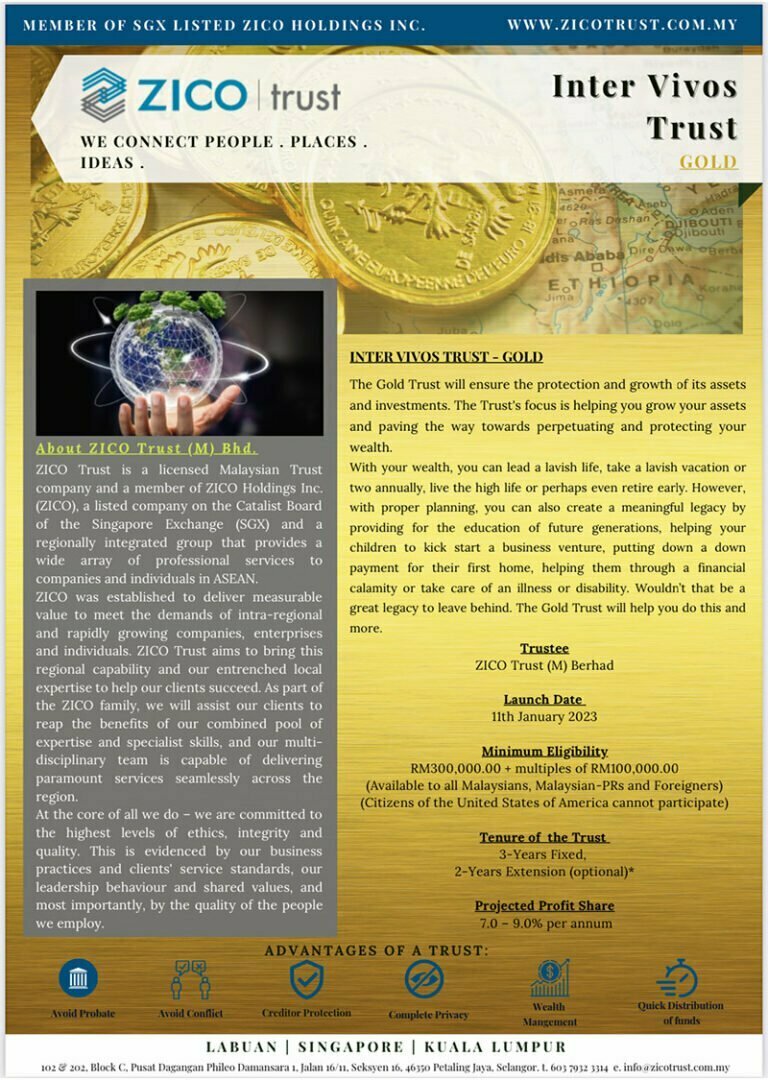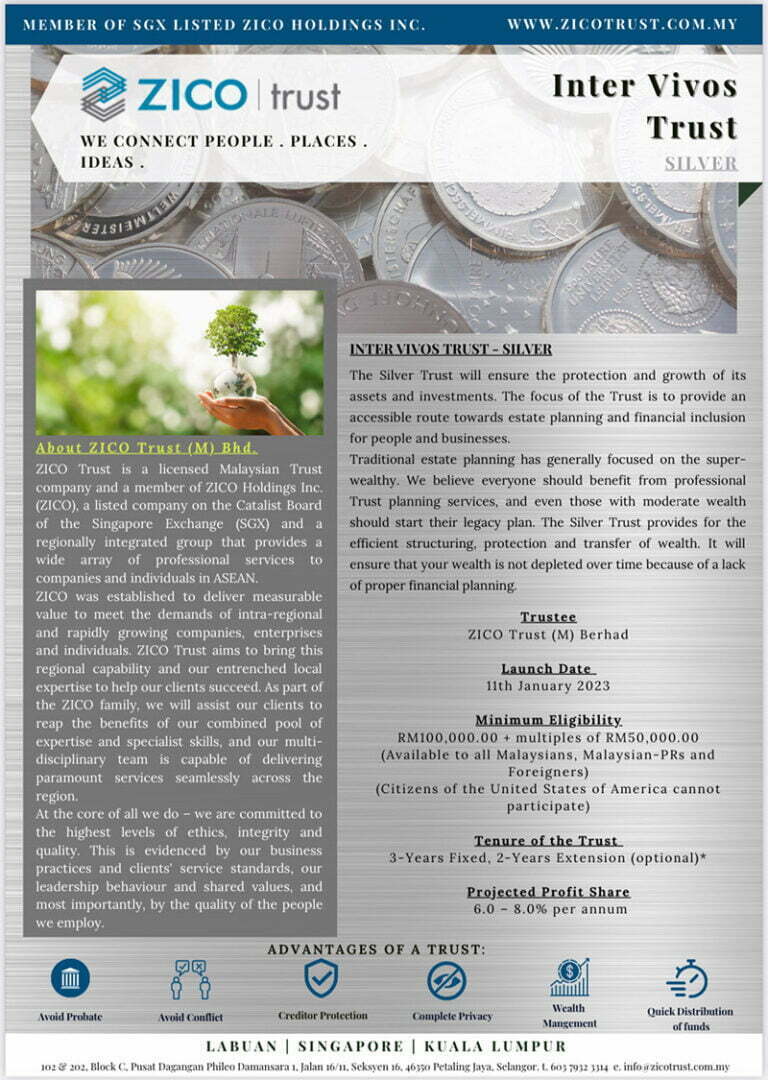In a nutshell, there are 5 components to forming a trust. They are as follows:
- The Settlor
- The Trustee
- The Beneficiaries
- The Assets
- The Trust Deed
1. The Settlor
He is the original asset owner who intends to set up a trust.
2. The Trustee
He is entrusted to administer the assets on behalf of the settlor for the benefits of the nominated beneficiaries.
3. The Beneficiaries
They are entitled to the benefits derived from the trust’s assets.
4. The Assets
The settlor must transfer legal ownership of his assets to his trustee in order for the trustee to start his administrative duties of these entrusted assets.
5. The Trust Deed
It is a document that specifies how the assets are to be managed by the trustee throughout the trust period.
One Common Application
There are many applications as to how one achieves his financial objectives and purposes by forming a trust. Here, to understand how it works, I’ll illustrate one common use of a trust. It is as follows:
A father wishes to set aside RM 1 million in university fees for his 8-year old son today. He could choose to hold onto it or invest it as his son is expected to enrol into a university at 18-20 years old, which is some 10-12 years away from today. But, he understands that he could lose the money or the access of it due to:
- Business loss.
- Losses from poor investment decisions.
- Health reasons: dementia, critical illnesses, coma, disabilities … etc.
- Death
Thus, he decides to set up a trust, where he entrusts RM 1 million to his trustee for safekeeping until his son enrols himself into a university. In this case:
- The settlor is the father.
- The trustee can be an individual or trust company that he trusts.
- The beneficiary is his son.
- The assets entrusted are RM 1 million.
- The trust deed instructs the trustee on managing the RM 1 million.
Upon agreement:
- The father transfers legal ownership of RM 1 million to the trustee.
- The trustee manages the RM 1 million for the trust period.
- The administration method is governed by the trust deed.
- Upon maturity, the trustee releases RM 1 million to pay university fees.
- Upon disbursement, the trustee ends his duty. Trust is terminated.
The above arrangement remains effective regardless of the father’s
- Financial losses due to business failures.
- Losses from poor investment decisions.
- Changes in marital status.
- Health loss due to illness and disability, both physically and mentally.
- Death.
More Questions:
The above is a simple illustration of how a trust works and how it could assist to meet one’s financial objectives. In practise, you may have more questions as follows:
- Who should I appoint as my trustee?
- What assets can be placed in a trust structure?
- Who can I appoint as the beneficiaries of my trust?
- How much does it cost to set up a trust?
- How much is the trustee and management fees?
A professional estate planner is one who seeks to understand your objectives in forming a trust and could work out a cost-effective trust solution to meet them.
For a start, you can begin by filling up your details below to book yourself a 30- minute consultation session. Our promise to you is: “You shall walk away with at least one key idea to secure your family’s financial future.”



